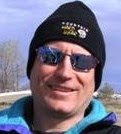Georgia on My Mind
By Rand Baldwin “NN”
My planning for the 21st leg of Alby’s journey began after my soaring buddy (and SoaringCafe.com partner) Bill Elliott trailered his JS1 Revelation to Sylacauga on June 23rd and received custody of Alby from Eric Hey. Bill made sure Alby was comfortably tucked away in his JS1 and then soared to our home base at Moontown Airport (3M5) near Huntsville, Alabama. Bill and I are both long-time members of the Huntsville Soaring Club, which has operated from Moontown since 1985.
Bill suggested that I consider flying the next leg on the following Saturday, June 30th. The synoptic forecast looked OK, although the weekend would be a scorcher. Max forecast ground temperatures for Saturday and Sunday were 107F! Temps that high are extremely rare in the Southeast, especially in June. The soaring forecast, however, was extraordinary. XC Skies predicted thermal heights at 7,000 to 9,000 feet and climb rates of 5 to 7 knots. It has been very dry in the South this spring, so it would be blue around Huntsville with perhaps some cu near my destination at Georgia’s LaGrange-Callaway Airport, southeast of Atlanta and home to the Southern Eagles Soaring (SES) club.
On Friday, the night before my flight, Tim McGowin (2EZ), a long-time soaring buddy and SES member, called to tell me that my friends and SES members Mary Jo and Wally Berry (WB) had graciously offered to put me up for the night if I made it to LaGrange. I’ve known Mary Jo and Wally for two decades, but hadn’t seen them for a couple of years, so I was tempted to take them up on their offer.
 |
| Flight Plan: Moonville to LaGrange |
LaGrange is 143 miles from Moontown by air, so it’s not a particularly challenging cross country flight on a decent day. My only concern was the terrain along the latter half of the route. Much of the area along the Alabama-Georgia border and toward LaGrange is hilly and heavily forested. Although there are small airports every 20 to 25 miles near a direct course between Moontown and LaGrange, landable fields are few and far between. If the forecast panned out, of course, I should easily be able to hop from one airport to another. Landing out would be far down my list of concerns. Nevertheless, with the terrain in mind, I chose the following route: Moontown – Guntersville – Albertville – Gadsden – McMinn – Anniston – Ashland – Roanoke – LaGrange: 153 miles.
As expected, Saturday morning dawned hot, hazy, and blue. High pressure, which in the absence of the extreme temperatures would normally suppress convection, dominated the area, causing visibility to suffer.
A couple of days before, I had contacted a fellow HSC pilot, John Mittel, whose ASW-27 is undergoing repair, to find out if he could crew for me. John kindly agreed to retrieve me, which was a major commitment, since a round trip by car between Moontown and LaGrange is an eight to nine hour road trip.
We wanted to assemble the glider early, so John and I met Bill at a Waffle House for breakfast. Bill was on his way to Tullahoma, Tennessee to fly his JS1 with Dick Butler, who would be flying his brand new Concordia.
After breakfast, John and I drove to Moontown and stopped at the HSC trailer hangar, where my LS8 spends most of its down time. We were joined by former HSC instructor Don Gamble and HSC tow pilot (and Grob Astir owner) Doug Morris. While checking the trailer lights, Don pointed out that I had no left turn signal and that one taillight was brighter than the other.
Fortunately, Doug tackled the trailer lighting problem with a vengeance and managed to successfully troubleshoot the issue and fix it (Thanks, Doug!). Unfortunately, we lost about an hour of time, so we had to assemble after the ground temps were well into the 90s. Finally, the ship was ready to launch and scurried around making sure the last few items were in the cockpit. By that time, I had decided that I would either stay with Mary Jo and Wally or try to get a tow at LaGrange if I landed early enough and there was time to make the return trip. So John was off the hook.
I launched at about 1:00 PM CDT and soon found a 2 knotter that took me to ~ 5,200’ AGL. The sky was blue as far as I could see (~15 miles), but by 1:20 I was high enough to get started, so I pushed the nose down and headed southeast toward Guntersville.
 |
| Guntersville Airport and Lake Guntersville |
I glided for about 20 minutes and lost 4,000’. I flew over the edge of the town of Albertville and felt a few bumps, but nothing worth circling in, so I turned toward the airport, hoping the runway or a nearby construction site would trigger lift.
 |
| Albertville Airport from on high |
 |
| First Cumulus |
Short of Gadsden, I headed straight for McMinn Airport, working a couple of clouds along the way. The clouds proliferated and grew in size as I flew further south, so the rest of the flight was pretty much a cakewalk. My concerns about terrain evaporated. Who cares about the ground when you’re at 8,000’?
 |
| On final glide eight miles from LaGrange over the lake |
The rest of the flight was high and fast. At 3:23, 47 miles from LaGrange, I started a 30-minute final glide. Except for one circle, I flew straight to LaGrange and arrived over the airport at 3:56 CT.
Before landing, I called Tim McGowin, who was preparing his glider for its annual inspection at the SES hangar. The hangar is on the west side of a beautiful wide grass landing area, which lies between runway 3/33 and a taxiway near the hangar. On final, I saw Tim waiting for me. As I rolled to a stop, he ran out and caught my wing.
 |
| Rand at LaGrange |
 |
| Rand (R) presents Alby to Tim McGowin (L) |

Epilogue:
Tim gave me a ride to Wally and Mary Jo’s home near Auburn, Alabama, where Wally is a professor of agriculture and a specialist in poultry science. The Berrys had recently built a new house in a wooded area outside of the city, so I was treated to a tour of their beautiful new home. They did much of the interior work themselves and it is truly a work of art!
 |
| Rand, Mary Jo, and Wally . . . and the dogs |
We had dinner at a nearby restaurant and stayed up late catching up on the years since we’d seen each other. The next morning, I enjoyed a wonderful breakfast, courtesy of Mary Jo, who also packed a cooler with lunch and dirinks for a morning at the airport. Back at LaGrange, Wally assembled his Libelle H-301 and we conferred with Chris Ruf, Tim, and Dieter about the weather and their tasks for the day, which was forecast to be another good soaring day.
 |
| Chris, Rand, Tim, and Wally under Tim’s wing awaiting tows at LaGrange |
 |
| Tim McGowin in 2EZ |
 |
| Wally’s H-301 Libelle |
The cus were clearly overdeveloping even before we left LaGrange, but the lift was great. When I passed Ashland/Lineville, the others wisely decided to rurn around and head back to LaGrange before the sky blew up.
For me, the flight all the way to McMinn was high and fast, but after turning toward Gadsden, I ran under blow-off from a storm to the north that had dissipated. It was shadowing the area ahead, but I had plenty of altitude to make it to the turn, so I wasn’t too concerned. Mother Nature, however, had other plans. I was soon running through interminable sink. My netto was indicating a constant 3 to 4 knots down, and the altimeter was winding down at an alarming rate. This continued unabated for several miles, until I became concerned that I might not make Gadsden Airport. There are few places to land on a direct route to the airport, so I deviated to a private strip, Golden Pond, about 10 miles south of Gadsden, hoping to find something going up around there.
The sink finally abated, but by that time, I was ~1,500’ above Golden Pond and the shadow from the high altitude blow-off had apparently killed the lift. The dying cumin must also have dumped cool air, which caused the large scale sink. I was stunned at the dramatic turn of events, but I had to accept my fate. Gear down, spoilers out, land. . .
Golden Pond turned out to be a nice wide, grassy strip with no surprises. As soon as I collected myself, got out of the cockpit, and surveyed the strip, I called Doug Morris, who was waiting for my arrival at Moontown and requested an aero retrieve. Doug fired up the Pawnee and was there within an hour.
 |
| On Golden Pond |
After passing Guntersville, I released from the Pawnee and raced the 25 or so miles back to Moontown at ~90 knots. When I landed, club members John Mittel, Randy Stout,and Stu Venters were there to greet me and help me disassemble my bird. As I was getting out of the glider, Randy handed me a beer, which I gulped down immediately.
I am honored to have participated in Alby’s voyage. It was great fun and I enjoyed a wonderful weekend of soaring in outstanding weather and seeing old friends. Thanks Alby!









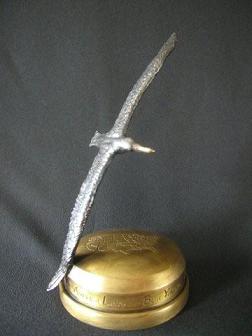
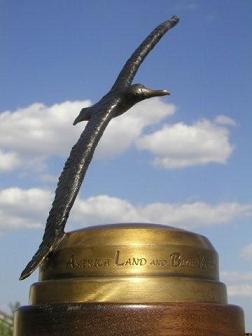


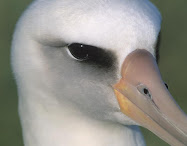
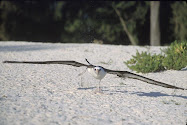


.jpg)
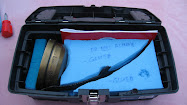.jpg)
.jpg)
.jpg)
.jpg)
.jpg)

.jpg)
.jpg)
.jpg)
.jpg)
.jpg)
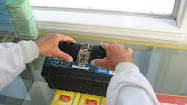.jpg)
.jpg)

.jpg)




